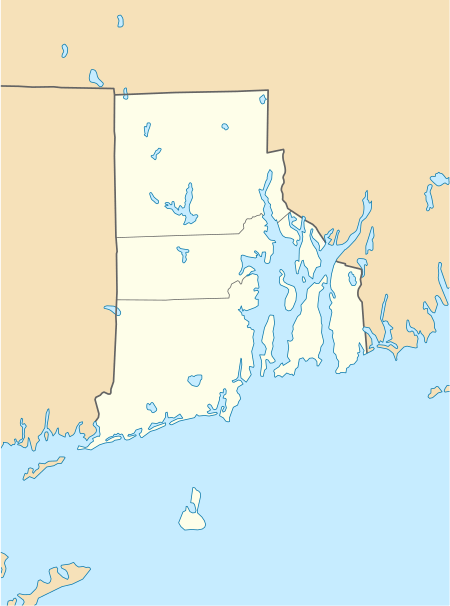Roger Williams National Memorial
The Roger Williams National Memorial is a landscaped urban park located on a common lot of the original settlement of Providence, Rhode Island, established by Roger Williams in 1636, bounded by North Main, Canal, and Smith Streets, and Park Row. The memorial commemorates the life of the co-founder of the Colony of Rhode Island and Providence Plantations and a champion of the ideal of religious freedom. Williams was banished from the Massachusetts Bay Colony for his beliefs, and he founded this colony as a place where all could come to worship as their conscience dictated without interference from the state. This park is the 20th smallest National Park System unit in the nation.
Roger Williams National Memorial | |
U.S. National Memorial | |
 | |
  | |
| Location | Providence, Rhode Island |
|---|---|
| Coordinates | 41.83038°N 71.41089°W |
| Area | 4.56 acres (1.85 ha)[1] |
| Built | 1636 |
| Architect | Norman Isham |
| Website | Roger Williams National Memorial |
| NRHP reference No. | 66000942[2] |
| Added to NRHP | October 15, 1966 |
Description

The Roger Williams National Memorial is a 4.5-acre (1.8 ha) park located near the eastern bank of the Moshassuck River, east of the Rhode Island State House and north of downtown Providence. It stands at the base of College Hill, a National Historic Landmark District that is the city's oldest and most historically significant area. It is separated from the river by Canal Street, and bounded on the other three sides by Smith Street, Park Row, and North Main Street. The southern portion of the park has a relatively open grassy area ringed by trees, while the northern portion is more landscaped, with the visitor center housed in the early 18th century Antram-Gray House [3] at the northeast corner, and a parking area on the west side. Major features in the northern section include the Bernon Grove and the site of the spring which prompted Williams to select the site.[4]:p.1
The park's visitor center features an exhibit and video about Roger Williams and the founding of Rhode Island, as well as information about historic sites in Providence.
Administrative history

The national memorial was authorized on October 22, 1965.[4]:p.55 The memorial was listed on the National Register of Historic Places on October 15, 1966. The site was developed in the late 1970s after land acquisition was completed and the buildings on the land were demolished.[4]:p.56 It was the only unit of the National Park System in Rhode Island until 2014 when the Blackstone River Valley National Historical Park was designated as a National Park Service unit.[1] (Touro Synagogue National Historic Site in Newport is an affiliated area of the National Park Service, but not formally part of the system.)
See also
| Wikimedia Commons has media related to Roger Williams National Memorial. |
- List of National Memorials of the United States
- National Register of Historic Places listings in Providence, Rhode Island
References
- The National Parks: Index 2012-2016 (PDF). Office of Communications and the Office of Legislative and Congressional Affairs National Park Service. 2016. p. 93. ISBN 0160932092. Retrieved 23 June 2017.
- "National Register Information System". National Register of Historic Places. National Park Service. April 15, 2008.
- National Park Service, Antram-Grey House, accessed 1 April 2017
- "Cultural Landscape Report for Roger Williams National Memorial". National Park Service. Archived from the original on November 3, 2014. Retrieved 2014-10-28. Alt URL
External links
- Official National Park Service website: Roger Williams National Memorial
| Parks in Providence, Rhode Island |
|---|
|
Burnside Park · India Point Park · Prospect Terrace Park · Roger Williams National Memorial · Roger Williams Park · Waterplace Park |